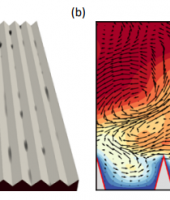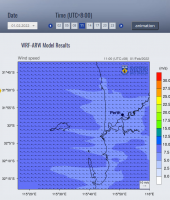A Roadmap for the Inclusion of Weak Forces in Structural Prediction
This project seeks to improve the way that new materials such as for batteries or filtration systems are studied. Materials simulation has found a growing use in science and industry, due to its ability to save costs and time and reduce risk in the research and development cycle. But these good properties are put at risk if simulations are unreliable. By contrast, reliable simulations could have an impact of billions of dollars in future, by letting us discover materials with ever more complex properties that can be used in energy, health and environmental applications
Area of science
Chemistry, Physical Sciences
Systems used
Magnus
Applications used
VASP, psi4, Gaussian16, QuantumEspressoThe Challenge
The current state-of-art in materials simulation is based heavily on intuition and “rules of thumb” that have not been heavily scrutinised, including the role played by “weak” dispersion forces in materials problems. This means that predictions may not be very accurate, so might lead subsequent experimental research into directions that are not productive. Improving the predictive accuracy of materials simulation is thus vital if we wish to increase the role of simulations in the materials discovery process.
The Solution
This project seeks to carry out state-of-art high-accuracy simulations of key materials. Its ouputs can then be used to benchmark lower cost (and lower accuracy) simulations so that we can get the highest possible accuracy for the lowest possible cost. Thus, the quality of future applied simulations will be improved which will, in turn, lead to increased use of materials simulation in the research and development cycle, to make it cheaper and more rapid.
The Outcome
The resources from Pawsey Centre enable the state-of-art high-accuracy calculations required by this project. These calculations are enabled from the high quality scaling and data transfer available on Magnus. They could not be carried out on a regular computer or university HPC centre in a reasonable timeframe. These enable us to perform highly-precise quantum mechanical studies and so understand the limitations of both lower cost theories and experiments
List of Publications
Publications benefiting directly from Pawsey resources on this project:
M Li, T Gould, Z Su, S Li, F Pan, S Zhang, Applied Physics Letters 115 (7), 073902 (2019)
C Cazorla, T Gould, Science advances 5 (1), eaau5832 (2019)
T Gould, ER Johnson, SA Tawfik, Beilstein journal of organic chemistry 14 (1), 1181-1191 (2018)
Note, another major project using Pawset resources has been completed and will soon be submitted for publication in a high impact journal







